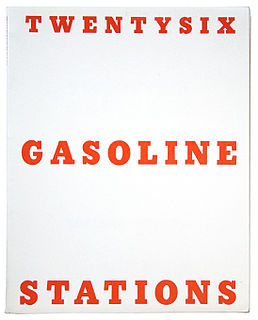 W
WArtists' books are works of art that utilize the form of the book. They are often published in small editions, though they are sometimes produced as one-of-a-kind objects.
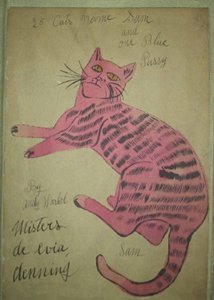 W
W25 Cats Name Sam and One Blue Pussy is a privately printed, limited edition artist's book by the American artist Andy Warhol.
 W
WAgrippa is a work of art created by science fiction novelist William Gibson, artist Dennis Ashbaugh and publisher Kevin Begos Jr. in 1992. The work consists of a 300-line semi-autobiographical electronic poem by Gibson, embedded in an artist's book by Ashbaugh. Gibson's text focused on the ethereal, human-owed nature of memories retained over the passage of time. Its principal notoriety arose from the fact that the poem, stored on a 3.5" floppy disk, was programmed to encrypt itself after a single use; similarly, the pages of the artist's book were treated with photosensitive chemicals, effecting the gradual fading of the words and images from the book's first exposure to light.
 W
WAn Anna Blume is a poem written by the German artist Kurt Schwitters in 1919. It has been described as a parody of a love poem, an emblem of the chaos and madness of the era, and as a harbinger of a new poetic language.
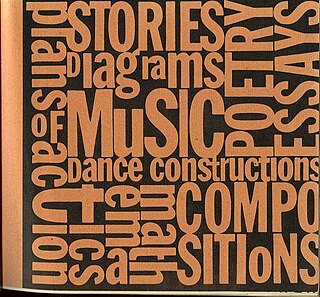 W
WAn Anthology of Chance Operations was an artist's book publication from the early 1960s of experimental neodada art and music composition that used John Cage–inspired indeterminacy. It was edited by La Monte Young and DIY co-published in 1963 by Young and Jackson Mac Low in New York City. Its full title is: An Anthology of chance operations concept art anti-art indeterminacy improvisation meaningless work natural disasters plans of action stories diagrams Music poetry essays dance constructions mathematics compositions.
 W
WArt-Language: The Journal of Conceptual Art (1969-1985) was a magazine published by the conceptual artists of Art & Language. Involving more than 20 artists in the United States, Europe, and Australia, and covering almost 20 years production, it is one of the most extensive artworks of conceptual art and is regarded as an important influence on both conceptual art and contemporary art.I don't understand quite a good deal of what is said by Art-Language, but I admire the investigatory energies, the tireless spade-work, the full commitment to the reestablishment of a valid language by which to discuss art and the occasional humour in their writings. The chaos in their reasons fascinates me, but it is also irritating to be unequipped to evaluate their work. - Six Years: The Dematerialization of the Art Object, Lucy R. Lippard, 1973.
 W
WAspen was a multimedia magazine published on an irregular schedule by Phyllis Johnson from 1965 to 1971. The magazine was based in New York City. Described by its publisher as "the first three-dimensional magazine," each issue came in a customized box or folder filled with materials in a variety of formats, including booklets, "flexidisc" phonograph recordings, posters, postcards and reels of super-8 movie film. Many of the leading figures in contemporary North American and British art and cultural criticism were editors, designers or contributors to Aspen. The magazine has remained of interest to students of the artistic ferment of the late 1960s; extensive documentation of Aspen's contents is available online at UbuWeb.
 W
W@earth is a 2011 book made by the London born photomontage artist Peter Kennard with Lebanese artist Tarek Salhany. It is a photo-essay told through photomontage with seven chapters exposing the current state of the Earth, the conditions of life on it and the need to resist injustice. It was released on 1 May 2011 by Tate Publishing.
 W
WThe Ballad of Sexual Dependency is a 1985 slide show exhibition and 1986 artist's book publication of photographs taken between 1979 and 1986 by photographer Nan Goldin. It is an autobiographical document of a portion of New York City's No wave music and art scene, the post-Stonewall gay subculture of the late 1970s and early 1980s, the heroin subculture of the Bowery neighborhood, and Goldin’s personal family and love life.
 W
WBÏF§ZF+18 Simultaneità e Chimismi lirici is a poetry book and artist's book published in 1915 by the Italian futurist Ardengo Soffici. Despite its rarity, the book has become famous as one of the finest examples of futurist 'words-in-freedom', and has been described as 'absolutely the most important book that came out of Florentine Futurism'.
 W
WA Book from the Sky is the title of a book produced by Chinese artist Xu Bing in the style of fine editions from the Song and Ming dynasties, but filled entirely with meaningless glyphs designed to resemble traditional Chinese characters. The book, which consists of four volumes totaling 604 pages, was printed in a single print run of 126 copies between 1987 and 1991, and was first publicly exhibited in October 1988, in Beijing's China Art Gallery.
 W
WChristine's Picture Book is one of three famous scrapbooks created in part by the Danish author Hans Christian Andersen.
 W
WCodex Seraphinianus, originally published in 1981, is an illustrated encyclopedia of an imaginary world, created by Italian artist, architect and industrial designer Luigi Serafini between 1976 to 1978. It is approximately 360 pages and written in an imaginary language.
 W
WCorpo d'aria is an artist's multiple by the Italian artist Piero Manzoni. Manufactured between October 1959 and March 1960, the pieces are a box, a tripod base, a deflated balloon and a mouthpiece. 45 copies were made and sold at 30,000 lire each. Originally, any buyer could ask Manzoni to inflate the balloon himself, but would be charged an extra Deutschmark for every litre of air expanded. When fully expanded, the balloons measured 80 cm in diameter.
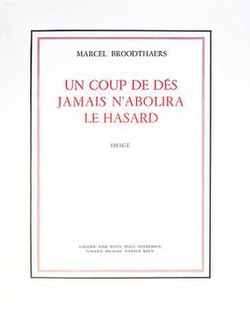 W
WUn Coup de Dés Jamais N'Abolira Le Hasard is an artist's book by Marcel Broodthaers published November 1969 in Antwerp. The work is a close copy of the first edition of the French Symbolist poet Stéphane Mallarmé's poem of the same name, published in 1914, but with all the words removed, replaced by black stripes that correspond directly to the typographic layout used by Mallarmé to articulate the text. Broodthaers reduces Un Coup de Dés to its structure - or to put it another way he elevates the structure of the work to a concept worthy of study in its own right, thus acknowledging Mallarmé's own fetishistic attention to this aspect of his work. Rendering the structure concrete, visible, almost tactile, Broodthaers offers a conceptual analysis of Mallarmé's poem across the distance of a nearly a century...It would be hard to imagine a more subtle treatment of Mallarmé's work, or one more capable of demonstrating its essential properties, than this reworked book by Broodthaers. — Johanna Drucker
 W
WLes Peintres Cubistes, Méditations Esthétiques, is a book written by Guillaume Apollinaire between 1905 and 1912, published in 1913. This was the third major text on Cubism; following Du "Cubisme" by Albert Gleizes and Jean Metzinger (1912); and André Salmon, Histoire anecdotique du cubisme (1912).
 W
WDali's Mustache is an absurdist humorous book by the surrealist artist Salvador Dalí (1904–1989) and his friend, the photographer Philippe Halsman (1906–1979). The first edition was published in October 1954 in New York; slightly modified French editions followed in the 1980s and 1990s.
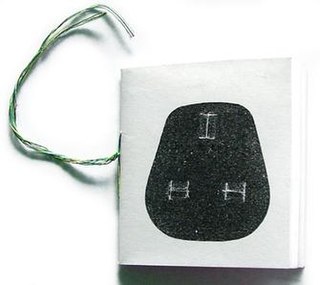 W
WDie-Cut Plug Wiring Diagram Book is an artist's book by the English artist Mark Pawson, originally published in early 1992. Originally consisting of 36 full-size reproductions of British AC power plug wiring diagrams printed in various colours, the book has become celebrated as an example of English sociological art, and is sometimes referred to as part of the New Folk Archive. Online gallery Hayvend described it: "the ultra-obsessive die cut plug wiring diagram book [is part of] an avalanche of essential ephemera [collected] by unashamed image junkie Mark Pawson". 'Many of the items [Pawson] produces are made out of his or other people's waste material including comics, flyers, glossy fashion magazines, children's colouring books, braille hymn books, antique paper, wood-chip wallpaper and the odd pornographic magazine. Pawson's most successful pieces are usually made of the most simple materials.'
 W
WDimanche (Sunday), also known as Dimanche - Le Journal d'un Seul Jour is an artist's book by the French artist Yves Klein. Taking the form of a 4-page Sunday broadsheet, the piece was published on Sunday 27 November 1960 and sold on newsstands throughout Paris for one day only, as well as being handed out at a press conference held by Klein at the Galerie Rive Droite at 11.00am on the same day.
 W
WDu "Cubisme", also written Du Cubisme, or Du « Cubisme », is a book written in 1912 by Albert Gleizes and Jean Metzinger. This was the first major text on Cubism, predating Les Peintres Cubistes by Guillaume Apollinaire (1913). The book is illustrated with black and white photographs of works by Paul Cézanne (1), Gleizes (5), Metzinger (5), Fernand Léger (5), Juan Gris (1), Francis Picabia (2), Marcel Duchamp (2), Pablo Picasso (1), Georges Braque (1), André Derain (1), and Marie Laurencin (2).
 W
WMémoires (Memories) is an artist's book made by the Danish artist Asger Jorn in collaboration with the French artist and theorist Guy Debord. Printed in 1959, it is the second of two collaborative books by the two men whilst they were both members of the Situationist International.
 W
WFluxus 1 is an artists' book edited and produced by the Lithuanian-American artist George Maciunas, containing works by a series of artists associated with Fluxus, the international collective of avant-garde artists primarily active in the 1960s and 1970s. Originally published in New York, 1964, the contents vary from edition to edition, but usually contain work by Ay-O, George Brecht, Alison Knowles, György Ligeti, Yoko Ono, Robert Watts and La Monte Young amongst many others.
 W
WThe Four Seasons of Mary Azarian is a 2000 children's book by Mary Azarian. The book contains wood carvings that have been printed from the author's woodcut carvings, some of which have been painted. It has been reviewed positively, for example The Boston Globe called it a regional book that is a "classic winner".
 W
WGranary Books is an independent small press and rare books and archives dealer based in New York City. Owned and directed by Steve Clay, Granary has published hundreds of books that "produce, promote, document, and theorize new works exploring the intersection of word, image, and page." As a rare books and archives dealer, Granary Books also assists in the placement and preservation of authors' and artists' archives. In addition to these activities, Granary Books administers projects such as "From a Secret Location," a digital repository of materials related to the small press and mimeograph revolutions from the 1960s to 1980s. Its trade books are distributed by D.A.P./Distributed Art Publishers and Small Press Distribution.
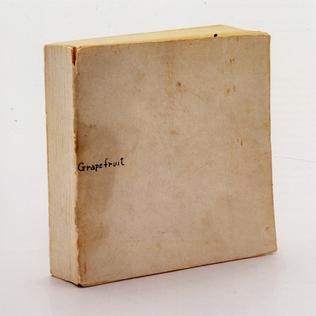 W
WGrapefruit is an artist's book written by Yoko Ono, originally published in 1964. It has become famous as an early example of conceptual art, containing a series of "event scores" that replace the physical work of art – the traditional stock-in-trade of artists – with instructions that an individual may, or may not, wish to enact.Grapefruit is one of the monuments of conceptual art of the early 1960s. She has a lyrical, poetic dimension that sets her apart from the other conceptual artists. Her approach to art was only made acceptable when white men like Kosuth and Weiner came in and did virtually the same thing as Yoko, but made them respectable and collectible.
 W
WA Humument: A treated Victorian novel is an altered book by British artist Tom Phillips, published in its first edition in 1970 and completed in 2016. It is a piece of art created over W H Mallock's 1892 novel A Human Document whose title results from the partial deletion of the original title: A Human document.'
 W
WHenri Matisse’s Jazz is a limited-edition art book containing prints of colorful cut-paper collages, accompanied by the artist's written thoughts. It was first issued on September 30, 1947, by art publisher Tériade. The portfolio, characterized by vibrant colors, poetic texts, and circus and theater themes, marks Matisse's transition to a new form of medium.
 W
WJedermann sein eigner Fussball was a single-issue illustrated magazine published by Malik Verlag. The satirical tabloid was published on 15 February 1919; police arrested staff and confiscated copies immediately on publication. It included two photomontages by John Heartfield on the front cover and six line drawings by George Grosz. Texts by Herzfelde, Walter Mehring, Mynona; other contributors jointly credited include Richard Huelsenbeck, Erwin Piscator, Karl Nierendorf, and J.H. Kuhlemann. The cover's typeface and layout satirise contemporary trends in conservative German newspaper design.
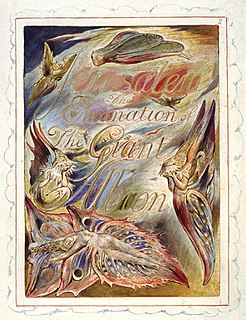 W
WJerusalem, subtitled The Emanation of the Giant Albion, is the last, longest and greatest in scope of the prophetic books written and illustrated by the English poet, artist and engraver William Blake. Etched in handwriting, accompanied by small sketches, marginal figures and huge full-plate illustrations, it has been described as "visionary theatre". The poet himself believed it was his masterpiece and it has been said that "of all Blake's illuminated epics, this is by far the most public and accessible". Nonetheless, only six copies were printed in Blake’s lifetime and the book, like all of Blake’s works, was all but ignored by his contemporaries.
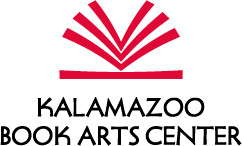 W
WThe Kalamazoo Book Arts Center (KBAC) is a nonprofit organization of artists and writers located in Kalamazoo, Michigan.
 W
WKlänge is a book by the Russian expressionist artist Wassily Kandinsky. Published in an edition of 345 in Munich in late 1912, the work is a famous early example of an artist's book, containing both poems and woodcuts by the artist, forming two parallel strands, each involving a loose progression. One of three seminal books that Kandinsky published between 1911 and 1912 - the other two being Concerning the Spiritual in Art and Der Blaue Reiter Almanac that he edited with Franz Marc - Klänge was to have a direct and lasting influence on Expressionism, Dada and Russian Futurism. [Kandinsky] began writing prose-poems, composing 38 altogether between 1908 and 1912. In 1913 these were published by Piper Verlag under the title Sounds, accompanied by colour and black-and-white woodcuts. in these Dadaistic poems, Kandinsky employs a method borrowed from young children's early attempts at speech; through constant repetition and babbling words are emptied of their meaning, so that only the pure sound remains. It is Kandinsky's aim to uncover this "pure sound" of language, the sound which "sets the soul vibrating." "We fought for painting, but painting alone will not suffice. I had the idea of a synthetic book that removed half of the old, narrow conceptions, breaking down the walls between the arts.... and finally prove that the problem of art is not a problem of form but a problem of spiritual content." Kandinsky,
 W
WThe Liber Veritatis, meaning Book of Truth in Latin, is a book of drawings recording his completed paintings made by Claude Lorrain, known in English as "Claude". Claude was a landscape painter in Rome, who began keeping this record in 1635/6, as he began to be highly successful, and maintained it until his death in 1682. The book is now in the British Museum, and was owned by the Dukes of Devonshire from the 1720s until 1957. It was reproduced in print form from 1774 to 1777 by Richard Earlom and had a considerable influence on British landscape art. The title Liber Veritatis was apparently invented for these reproductions, but is now also used for the original.
 W
WLibrary of the Printed Web is a physical archive devoted to web-to-print artists’ books, zines and other printout matter. Founded by Paul Soulellis in 2013, the collection was acquired by The Museum of Modern Art Library in January 2017. The project has been described as "web culture articulated as printed artifact," an "archive of archives," characterized as an "accumulation of accumulations," much of it printed on demand. Techniques for appropriating web content used by artists in the collection include grabbing, hunting, scraping and performing, detailed by Soulellis in "Search, Compile, Publish," and later referenced by Alessandro Ludovico.
 W
WLinee (lines) is an artist's book by the Italian artist Piero Manzoni, created in 1959. Each work consists of a cardboard tube, a scroll of paper with a black line drawn down it, and a simple printed and autographed label. This label contains a brief description of the work, the work’s length, the artist’s name and the date it was created. Most of the lines were made between September and December 1959. 68 are known to have been made, each with different length strips inside.
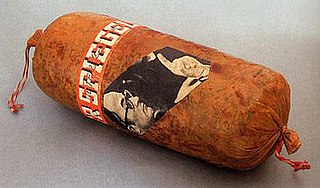 W
WLiteraturwurst is an Artist's book, made by the Swiss-German artist Dieter Roth between 1961 and 1974. Each book was made using traditional sausage recipes, but replacing the sausage meat with a book or magazine. The cover of the edition was then pasted onto the skin of the sausage and signed and dated. 'When I was young I wanted to become a real artist. Then I started doing something I felt wasn't real art, and it was through this that I became a well-known artist.' Dieter Roth
 W
WMémoires (Memories) is an artist's book made by the Danish artist Asger Jorn in collaboration with the French artist and theorist Guy Debord. Printed in 1959, it is the second of two collaborative books by the two men whilst they were both members of the Situationist International.
 W
WThe Narrative Corpse is a chain story, or comic jam, by 69 all-star cartoonists based on Le Cadavre Exquis, a popular game played by André Breton and his Surrealist friends to break free from the constraints of rational thought.
 W
WNight Fall in the Ti-Tree is a 1905 artist's book by Violet Teague and Geraldine Rede. It is about a family of rabbits and is known as the first Australian work using colour relief printing.
 W
WObject to Be Destroyed is a work by American artist Man Ray, originally created in 1923. The work consists of a metronome with a photograph of an eye attached to its swinging arm. After the piece was destroyed in 1957, later remakes in multiple copies were renamed Indestructible Object. Considered a "readymade" piece, in the style established by Marcel Duchamp, it employs an ordinary manufactured object, with little modification, as a work of art. Examples of the work are held in various public collections including Tate Modern London, MOMA New York and Reina Sofía, Madrid.
 W
WRat Catching (ISBN 0962299707) is a book by actor and filmmaker Crispin Glover. The book is a form of collage, reworked from Studies in the Art of Rat Catching, an 1896 non-fiction book now in the public domain. Pictures from the book, as well as the book itself, were shown in the opening credits of the 2003 film Willard, starring Glover. The book forms a segment of Glover's live slideshow readings, performed during particular screenings of his self-produced films What Is It? and It Is Fine! Everything Is Fine..
 W
WRussian Ballet is an artist's book by the English artist David Bomberg published in 1919. The work describes the impact of seeing a performance of Diaghilev's Ballets Russes, and is based on a series of drawings Bomberg had done around 1914, while associated with the Vorticist group of avant-garde artists in London. Centred on Wyndham Lewis and Ezra Pound, the movement flourished briefly 1914–1915, before being dispersed by the impact of the First World War. The only surviving example of a vorticist artist's book, the work can be seen as a parody of Marinetti's seminal futurist book Zang Tumb Tumb, using similar language to the Italian's work glorifying war, but instead praising the impact of watching the decidedly less macho Ballets Russes in full flow.Bomberg was the most audacious painter of his generation at the Slade, proving ... that he could absorb the most experimental European ideas, fuse these with Jewish influences and come up with a robust alternative of his own. His treatment of the human figure, in terms of angular, clear-cut forms charged with enormous energy, reveals his determination to bring about a drastic renewal in British painting. —Richard Cork
 W
WUne semaine de bonté is a collage novel and artist's book by Max Ernst, first published in 1934. It comprises 182 images created by cutting up and re-organizing illustrations from Victorian encyclopedias and novels.
 W
WSongs of Innocence and of Experience is a collection of illustrated poems by William Blake. It appeared in two phases: a few first copies were printed and illuminated by Blake himself in 1789; five years later he bound these poems with a set of new poems in a volume titled Songs of Innocence and of Experience Shewing the Two Contrary States of the Human Soul. Blake was also a painter before the creation of Songs of Innocence and Experience and had painted such subjects as Oberon, Titania, and Puck dancing with fairies.
 W
WSpice Chess is an artist's multiple by the Japanese artist Takako Saito, while she was resident in the United States. Originally manufactured winter 1964-65, and offered for sale March 1965, the work is one of a famous series of disrupted chess sets referred to as Fluxchess or Flux Chess, made for George Maciunas' Fluxshop at his Canal Street loft, SoHo, New York City and later through his Fluxus Mail-Order Warehouse. "Takako Saito engaged with Duchamp's practice but also with masculinist cold war metaphors by taking up chess as a subject of [her] art. Saito's fluxchess works... question the primacy of vision to chess, along with notions of perception and in aesthetic experience more generally.... Her "Smell Chess," "Sound Chess" and "Weight Chess" reworked the game of chess so that players would be forced to hone non-visual perception, such as the olfactory sense, tactility, and aurality, in order to follow chess rules." Claudia Mesch
 W
WThe Topkapı Scroll is a Timurid dynasty pattern scroll in the collection of the Topkapı Palace museum.
 W
WTwentysix Gasoline Stations is the first artist's book by the American pop artist Ed Ruscha. Published in April 1963 on his own imprint National Excelsior Press, it is often considered to be the first modern artist's book, and has become famous as a precursor and a major influence on the emerging artist's book culture, especially in America. The book delivers exactly what its title promises, reproducing 26 photographs of gasoline stations next to captions indicating their brand and location. From the first service station, 'Bob's Service' in Los Angeles where Ruscha lived, the book follows a journey back to Oklahoma City where he had grown up and where his mother still lived. The last image is of a Fina gasoline station in Groom, Texas, which Ruscha has suggested should be seen as the beginning of the return journey, 'like a coda'.
 W
WUniversal War is an artist's book by Aleksei Kruchenykh published in Petrograd at the beginning of 1916. Despite being produced in an edition of 100 of which only 12 are known to survive, the book has become one of the most famous examples of Russian Futurist book production, and is considered a seminal example of avant-garde art from the beginning of the twentieth century.
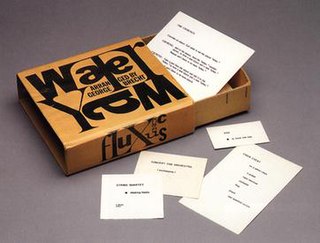 W
WWater Yam is an artist's book by the American artist George Brecht. Originally published in Germany, June 1963 in a box designed by George Maciunas and typeset by Tomas Schmit, it has been re-published in various countries several times since. It is now considered one of the most influential artworks released by Fluxus, the internationalist avant-garde art movement active predominantly in the 1960s and '70s. The box, sometimes referred to as a Fluxbox or Fluxkit, contains a large number of small printed cards, containing instructions known as event-scores, or fluxscores. Typically open-ended, these scores, whether performed in public, private or left to the imagination, leave a lot of space for chance and indeterminancy, forcing a large degree of interpretation upon the performers and audience.In some cases [event-scores] would arise out of the creation of the object, while in others the object was discovered and Brecht subsequently wrote a score for it, thus highlighting the relationship between language and perception. Or, in the words of the artist, "ensuring that the details of everyday life, the random constellations of objects that surround us, stop going unnoticed." The event-score was as much a critique of conventional artistic representation as it was a gesture of firm resistance against individual alienation.
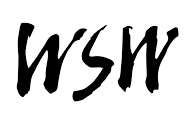 W
WWomen's Studio Workshop (WSW) is a nonprofit visual arts studio and private press offering residencies and educational workshops, located in Rosendale, New York.
 W
WWorkers is a book of 143 portraits of migrant workers who participated in the construction of the Olympic Green in Beijing, China in the lead up to the 2008 Summer Olympics. The book is the work of British artist Helen Couchman and consists primarily of photographs of the workers on the building site. The workers were photographed with the iconic buildings of the Beijing Olympics: The Beijing National Stadium (国家体育场), known colloquially as the "Bird's Nest" (鸟巢), and the Beijing National Aquatics Center (国家游泳中心), also known as the "Water Cube" (水立方).
 W
WYves Peintures is an artist's book by the French artist Yves Klein, originally published in Madrid, 18 November 1954. This publication was Klein’s first public gesture as an artist, featuring pages of 'commercially printed papers ' that were seemingly reproductions of paintings that, in fact, didn't exist. Using a practice started by Marcel Duchamp, this use of readymade objects to represent nothing but themselves has been referred to as an early example of Postmodernism, using a series of carefully executed strategies to undermine its own authority, and as a precursor to conceptual art. 'The simplicity of his readymades is at once sublime and mischievous.' "The booklet asserts its character straightaway in the preface: a wordless text of unbroken horizontal lines with the same two paragraph indentations on each page.... a homogenous continuum with no real beginning, middle, or end, and no content - at least insofar as there are no descriptions, analyses, or personalized utterances. The colour plates are similarly presented as anonymous entities, each a flat spatial field of an uninflected hue: turquoise, brown, purple, green, pink, gray, yellow, ultramarine, mint, orange, or red. Here, too, there is no attempt to represent or symbolize anything.... The booklet thus offers an utterly pared down presentation. Unlike most art books, it provides no reverential prose about the artist or the art, and no embellishing descriptions meant to convey meaning or context. Instead the booklet itself is made into a work of art that shares the same spirit of nothingness exemplified by the monochrome paintings that it features." Sidra Stich
 W
WZang Tumb Tumb is a sound poem and concrete poem written by Filippo Tommaso Marinetti, an Italian futurist. It appeared in excerpts in journals between 1912 and 1914, when it was published as an artist's book in Milan. It is an account of the Battle of Adrianople, which he witnessed as a reporter for L'Intransigeant. The poem uses Parole in libertà and other poetic impressions of the events of the battle, including the sounds of gunfire and explosions. The work is now seen as a seminal work of modernist art, and an enormous influence on the emerging culture of European avant-garde print. "[The] masterpiece of Words-in-freedom and of Marinetti’s literary career was the novel Zang Tumb Tuuum... the story of the siege by the Bulgarians of Turkish Adrianople in the Balkan War, which Marinetti had witnessed as a war reporter. The dynamic rhythms and onomatopoetic possibilities that the new form offered were made even more effective through the revolutionary use of different typefaces, forms and graphic arrangements and sizes that became a distinctive part of Futurism. In Zang Tumb Tuuum; they are used to express an extraordinary range of different moods and speeds, quite apart from the noise and chaos of battle.... Audiences in London, Berlin and Rome alike were bowled over by the tongue-twisting vitality with which Marinetti declaimed Zang Tumb Tuuum. As an extended sound poem it stands as one of the monuments of experimental literature, its telegraphic barrage of nouns, colours, exclamations and directions pouring out in the screeching of trains, the rat-a-tat-tat of gunfire, and the clatter of telegraphic messages" Caroline Tisdall and Angelo Bozzola
 W
WZone de Sensibilité Picturale Immatérielle is an artist's book and performance by the French artist Yves Klein. The work involved the sale of documentation of ownership of empty space, taking the form of a cheque, in exchange for gold; if the buyer wished, the piece could then be completed in an elaborate ritual in which the buyer would burn the cheque, and Klein would throw half of the gold into the Seine. The ritual would be performed in the presence of an art critic or distinguished dealer, an art museum director and at least two witnesses.
 W
W W
W W
W